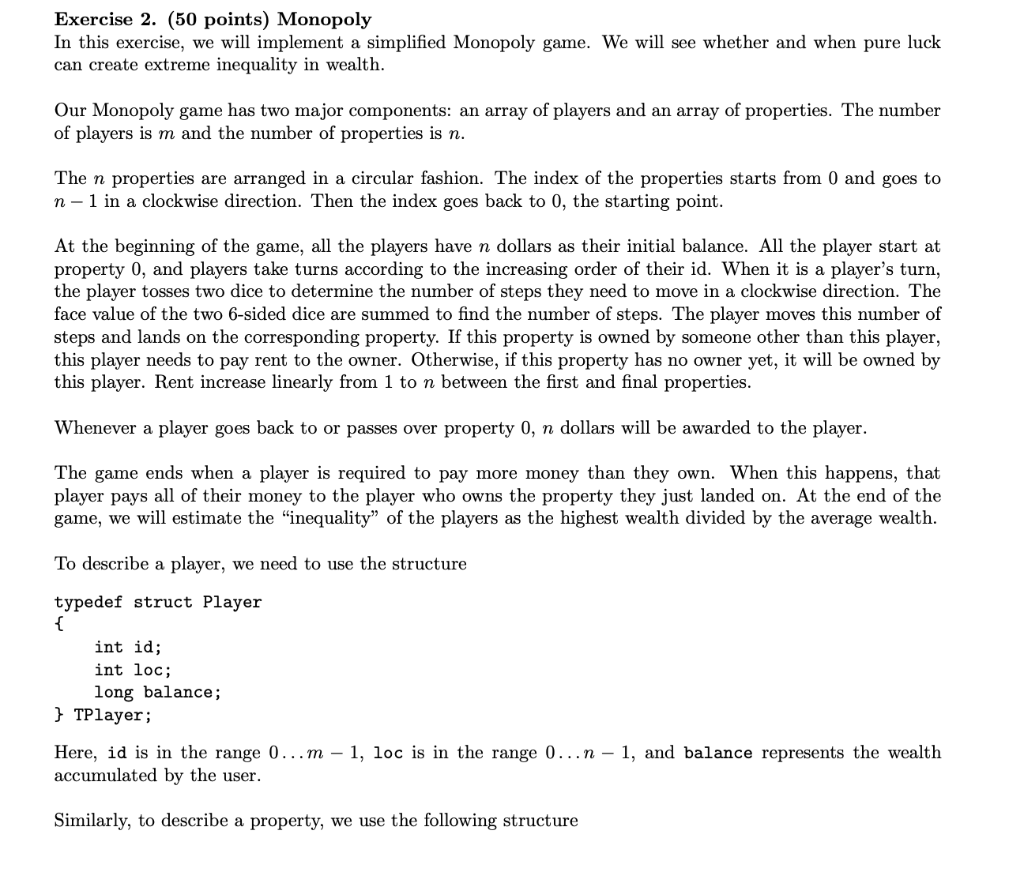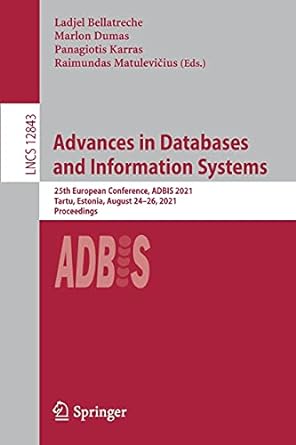Question
Please code in C language starter code is: #include #include #include //There will be m players in an array typedef struct Player { int id;
Please code in C language starter code is:
#include
#include
#include
//There will be m players in an array
typedef struct Player
{
int id;
int loc;
long balance;
} TPlayer;
//There will be n properties in an array
typedef struct Property
{
int id;
int owner_id;
int rent;
} TProperty;
//TODO
//Implement the following function
//The player p1 needs to pay the player p2 'amount' of dollars
//If p1 has enough balance, the transaction will be successful
//Otherwise, p1 will pay all of their balance to p2, and the transaction
//is not successful
//return 1 if the transaction is successful
//Otherwise, return 0
int transaction(TPlayer *p1, TPlayer *p2, int amount)
{
}
//TODO
//Finish the following function
//If one player cannot pay rent to another player, this function should return 0.
//The rest of the players will not get chances to play when this happens
int one_round(int m, int n, TPlayer p[], TProperty prop[])
{
for(int i = 0; i
{
int steps = rand() % 6 + 1 + rand() % 6 + 1;
//fill in the code below
}
return 1;
}
//used for printing out results
void print_result(int m, TPlayer p[])
{
printf(" id balance ");
for(int i = 0; i
{
printf("%8d %8ld ", p[i].id, p[i].balance);
}
long sum = 0;
long max = 0;
for(int i = 0; i
{
sum += p[i].balance;
if(p[i].balance > max) max = p[i].balance;
}
printf("average: %f max: %ld, max/average = %lf ", (double)sum/m, max, (double)max*m/sum);
}
//max_rounds is needed because the game may never finish
void monopoly(int m, int n, TPlayer p[], TProperty prop[], int max_rounds)
{
srand(12345);
int rounds = 1;
while(one_round(m, n, p, prop) && rounds
{
rounds ++;
}
print_result(m, p);
printf("after %d rounds ", rounds);
}
int main(int argc, char *argv[])
{
if(argc != 4)
{
printf("Usage: %s m n rounds ", argv[0]);
return -1;
}
int m = atoi(argv[1]);
int n = atoi(argv[2]);
assert(n >= 13);
assert(m >= 1);
assert(rounds >= 1);
int rounds = atoi(argv[3]);
TPlayer p[m];
TProperty prop[n];
for(int i = 0; i
{
prop[i].id = i;
prop[i].owner_id = -1;
prop[i].rent = i + 1;
}
for(int j = 0; j
{
p[j].id = j;
p[j].loc = 0;
p[j].balance = n;
}
monopoly(m, n, p, prop, rounds);
return 0;
}

Step by Step Solution
There are 3 Steps involved in it
Step: 1

Get Instant Access to Expert-Tailored Solutions
See step-by-step solutions with expert insights and AI powered tools for academic success
Step: 2

Step: 3

Ace Your Homework with AI
Get the answers you need in no time with our AI-driven, step-by-step assistance
Get Started


